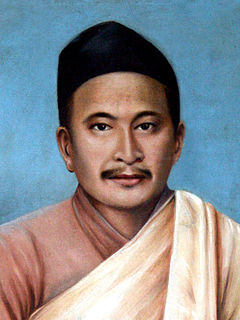 W
WKrishna Lal Adhikari was a Nepali author best known for publishing Makaiko Kheti (1920), a book about maize cultivation that was accused of being treasonous. He was sentenced to nine years in prison and died in jail. After his death, he was recognised as the first "literary martyr" in Nepal. Tinlal Park in Manthali, Ramechhap, is named after him.
 W
WBhairav Aryal(भैरव अर्याल) was an author of Nepali literature. His writings are based on the social, political, religious and cultural aspects of Nepali lifestyle, and his satirical essay compilation 'Jaya Bhudi' still remains one of the most popular works of Nepali Literature.
 W
WVishnu Raj Atreya was a Nepali writer and poet, who wrote in Nepali language, Sanskrit language and Awadhi language. He used the title Latosaathi in his poetry works since 1963 A.D. He is considered to be the first person to start writing Haiku in Sanskrit language.
 W
WBhim Bahadur Pande was Nepalese diplomat, bureaucrat and historian. He served as Nepalese Ambassador to India from May 21, 1969 to May 24, 1972. Sardar Bhim Bahadur also served to Juddha Shumsher Jang Bahadur Rana during his youth. He helped out to industrialize the Nepalese Tarai. He later wrote a book about challenges of industrialization in Terai called Tyas Bela Ko Nepal. He was a member of representative group of Nepal in the 1950 Indo-Nepal Treaty of Peace and Friendship. He wrote in the same book about the prejudiced and dominant behaviour of Indian authority on signing the Treaty. He also wrote about tyranny of Rana dynasty in the Nepalese literature and education sector.
 W
WBina Maya Theeng Lama, who writes under the pen name Bina Theeng Tamang, is a Nepali writer from Kathmandu, Nepal. She is a Nepalese poet.
 W
WAishwarya Rajya Lakshmi Devi Shah was the Queen of Nepal from 1972 to 2001, also referred as Bada Maharani बडामहारानी. She was the wife of King Birendra and the mother of Crown Prince Dipendra, Prince Nirajan, and Princess Shruti. She was the eldest among the three daughters of late General Kendra Shumsher Jang Bahadur Rana and Shree Rajya Lakshmi Devi Shah in Lazimpat Durbar, Lazimpat, Kathmandu.
 W
WDaulat Bikram Bista was a writer and poet of Nepali literature. He was born on 9 October 1925 in Bhojpur and passed away on 1 January 2002. His writing deals with the social issues mainly the exploitation and discrimination to the poor and down trodden people.
 W
WFour Pillars of Nepal Bhasa are the four leaders who spearheaded the campaign to revive the Newar language and its literature during the repressive Rana regime, and guided its renaissance at the beginning of the 20th century.
 W
WThis list of Nepalese poets consists of poets of Neplease ethnic, cultural or religious ancestry either born in Nepal or emigrated to Nepal from other regions of the world.
 W
WModanath Prasrit, also Modnath Prasrit is a Nepali writer, politician and political activist. A long time member of the Nepali communist movement, he became the Minister of Education in 2054 BS. His writings reflect his communist ideology. His book Devasur Sangram is particularly noted for its challenge to Hindu orthodoxy.
 W
WRamsharan Darnal was a Nepalese ethnomusicologist best known for initiating and publicizing the study of music of different ethnic groups in Nepal. He also played an important role in the popularization of a few western instruments in Nepal.